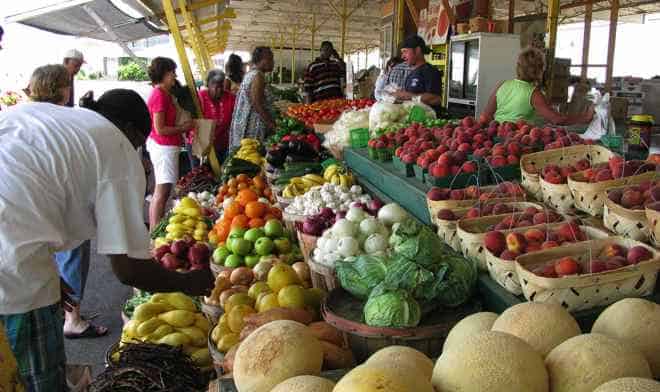Since 2006, the USDA Farmers Market Promotion Program has awarded grants to promote local food systems. Small grants have led to increased sales for farmers, better access to healthy produce for underserved communities, and more robust farmers market organizations.
Across the United States, there are more than 7,500 farmers markets providing family farmers with a sales platform for their products. Local farmers market organizations can play a key role in organizing the local farming community and can impact a large number of farmers. The 54 Green Markets organized by GrowNYC in New York, for example, have more than 230 family farmers and fishermen as their vendors.
The U.S. Department of Agriculture Farmers Market Promotion Program (FMPP) was created to support a wide array of farmers markets and direct farm marketing programs at the local, regional, and state levels. Since 2006, FMPP has granted 575 grants ranging from US$2,000 to US$100,000. In recent years, the program has had a focus on improving access to farmers markets for users of Supplemental Nutrition Assistance Programs (SNAP), a social security program that provides assistance toward the purchase of food for America’s low-income population.
In total, the FMPP funded 160 projects with a focus on low-income consumers, and the funding period coincides with near tripling of SNAP redemptions at farmers markets, from US$4.2 million nationally in 2009 to US$16.6 million nationally in 2012. This increase in sales benefits not only recipients of SNAP, but also family farmers.
For example, one of the grantees surveyed answered that a grant of less than US$16,000 was needed to implement technology allowing vendors to accept SNAP. Since then, sales from SNAP purchases have led to an additional revenue stream of US$70,000, benefiting the family farmer vendors at the market.
Across all grants, the farmers markets that received awards from FMPP reported an average 27 percent increase in sales in the grant period. Almost all of the grantees reported an increase in first-time customers and on average a 47 percent increase in customer visitor counts. The majority of markets also saw an increase in the diversity of local produce sold at the market. According to the evaluation, the grants also helped establish positions in the local farmers market organizations, creating new green jobs.











